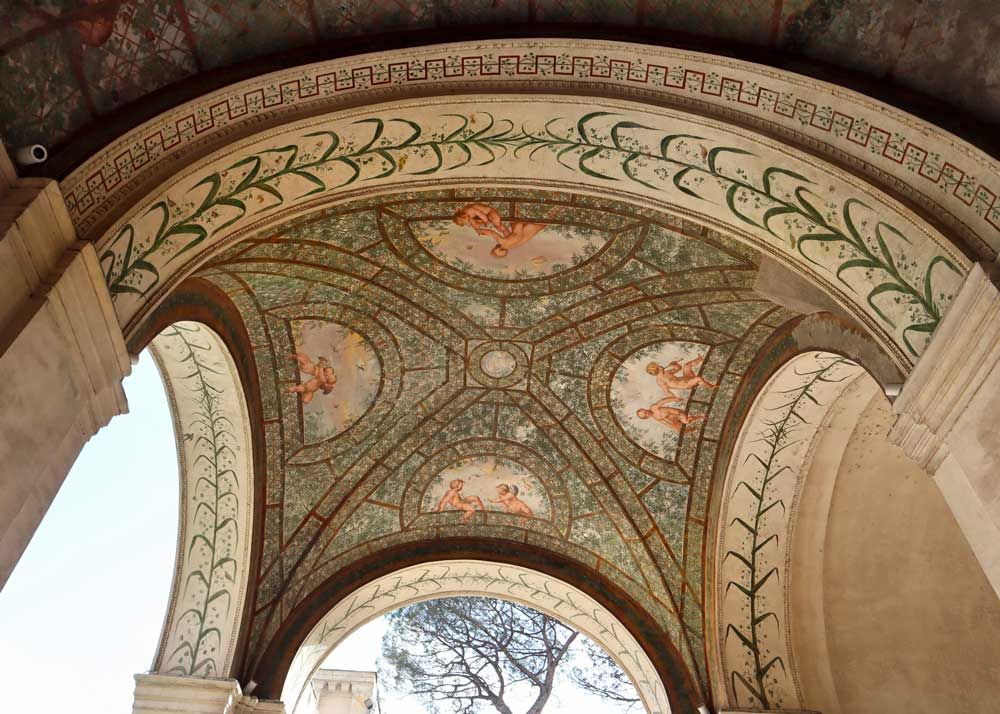
Stone, Fire, Time: A Meditation on Italian Etruscan Goldsmithing
Transcendence comes when you least expect it. It was early in my travels in an old museum in Rome that time stopped—
Half a meter from my eyes, propped atop a white pedestal in a white room, a disc of gold, every surface alive with fluid patterns—leaves, branches, filigree—its edges beaded with tiny orbs of gold, and radiating from a central red gemstone, an undulating pattern of gold wire.
In every twist and curl I saw the technical skill of its creator, for I was still young and enamored of my own education. But for a moment I encountered this gold brooch on a spiritual rather than an intellectual level. I stared into the sun and was not blinded but enlightened.
I inched closer to the display. This ancient artifact, smaller than the palm of my hand, would not let me go. It drew me deeper into its world.
It would have taken an artisan, maybe even a team of artisans, master and apprentices, days to craft a jewel like this, painstaking days working at the limits of human perception, eyes straining focus on flecks of gold almost too small to see, too small for the fingertips to feel, each minuscule bead of gold soldered in place one by one. So slowly, so carefully.
Though they left thousands of stone inscriptions behind, Etruscan, the language of these ancient Italian artisans, has only been partially deciphered. We know almost nothing of their thoughts, their beliefs, their daily lives, the structure of their society. We know them solely by their artifacts, not just earrings and brooches but statues and carved sarcophagi, but these jewels speak louder than any written language. Words could not connect me as deeply to these ancient people as that golden brooch.
I spent the next day absorbing all I could about these forgotten people, eventually discovering in a 19th-century manuscript that a century and a half ago there were still goldsmiths in remote regions of Italy crafting jewels just as the Etruscans had done nearly three millennia before. I sent a few emails out that night, and the next morning, an acquaintance put me in touch with an Etruscan goldsmith in a village south of Florence. The rush of discovery carried me to the train station. Once in Florence, I rented an old Moto Guzzi and headed south into the hills.
Hundreds of years before the founding of Rome, Etruscan civilization stretched from the twisting oak forests that emerge from the rocky coast of the Tyrrhenian Sea, across the shrubland of the interior, up to the densely wooded hills and mountains that divide the Italian peninsula into east and west. As my bike climbed those mountains, the vineyards disappeared behind dense tangles of wiry trees. Where the trees opened up to frame a landscape of valleys and haze-shrouded hills I glanced down only quickly as my bike whipped around corners. I was in a hurry. I rode for about an hour until I found my village.
For two days I sat silently in the workshop of a master goldsmith who carried himself with the humble dignity of a village blacksmith. I brought an ingot for him to work. He suffered my poor Italian with patience. I knew nothing of patience before.
Everything slow as fire, slow as the passing of seasons. The clay crucible heated over an open flame. Gold ingot softened on hot stone and hammered flat. Strands of gold wire pulled until it becomes a strand of hair from the head of a goddess. Tiny flecks of gold heated until they became granules.
Slow but not languid we worked. Delicacy is strength under control, a ballet.
We worked together, ate together, shared wine together, passed the time together, waiting as much as we worked, few words passing between us.
When the time came for us to part, I went away slowly, walking my bike through the village and acknowledging the hands that laid every brick, every cobblestone, that staked the trellises of the vineyard. Even in the clouds that hung over the distant mountains I saw the hand of an artist.
As I ride slow as the breeze back to the city I realize that this land was ancient long before the Romans laid their roads here, that even in the absence of language we converse with the past and connect through art.
The Etruscans didn’t invent the techniques I learned that day. They flowed here from Egypt and Mesopotamia. The Etruscan goldsmiths took inspiration from all over the Mediterranean world, observing the grandeur of Egyptian pharaohs and Phoenician merchants and reinterpreting it for their own culture. We know all about the Egyptians, the Phoenicians, the Persians and Greeks and Romans. But even today the Etruscans remain silent, ghosts haunting the gaps in history.
Their language does not speak to us, but their art touched me more deeply than words. Art shows us what our senses cannot, says what words cannot. If our jewels bring that transcendent experience to just one person, then I’ve achieved all I ever dreamed of.

